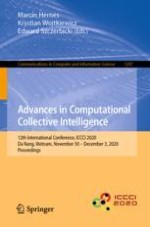2020 | OriginalPaper | Buchkapitel
Inferring the Complete Set of Kazakh Endings as a Language Resource
verfasst von : Ualsher Tukeyev, Aidana Karibayeva
Erschienen in: Advances in Computational Collective Intelligence
Aktivieren Sie unsere intelligente Suche, um passende Fachinhalte oder Patente zu finden.
Wählen Sie Textabschnitte aus um mit Künstlicher Intelligenz passenden Patente zu finden. powered by
Markieren Sie Textabschnitte, um KI-gestützt weitere passende Inhalte zu finden. powered by
